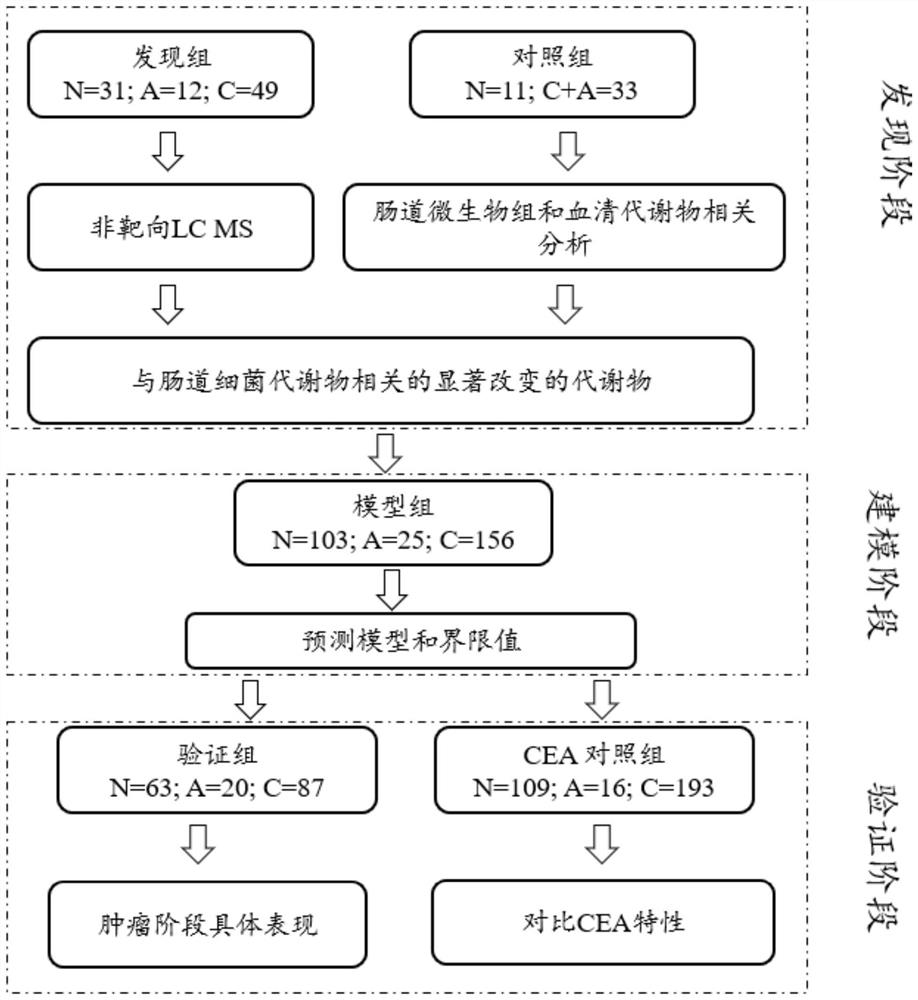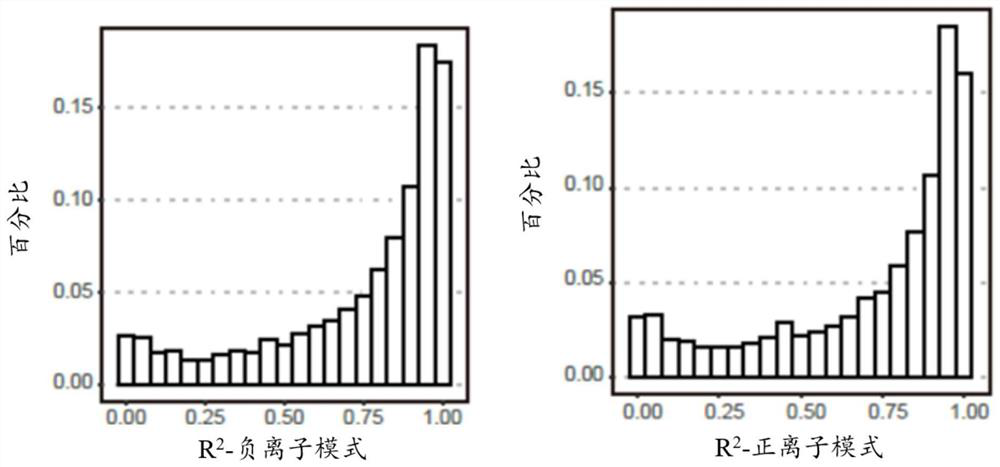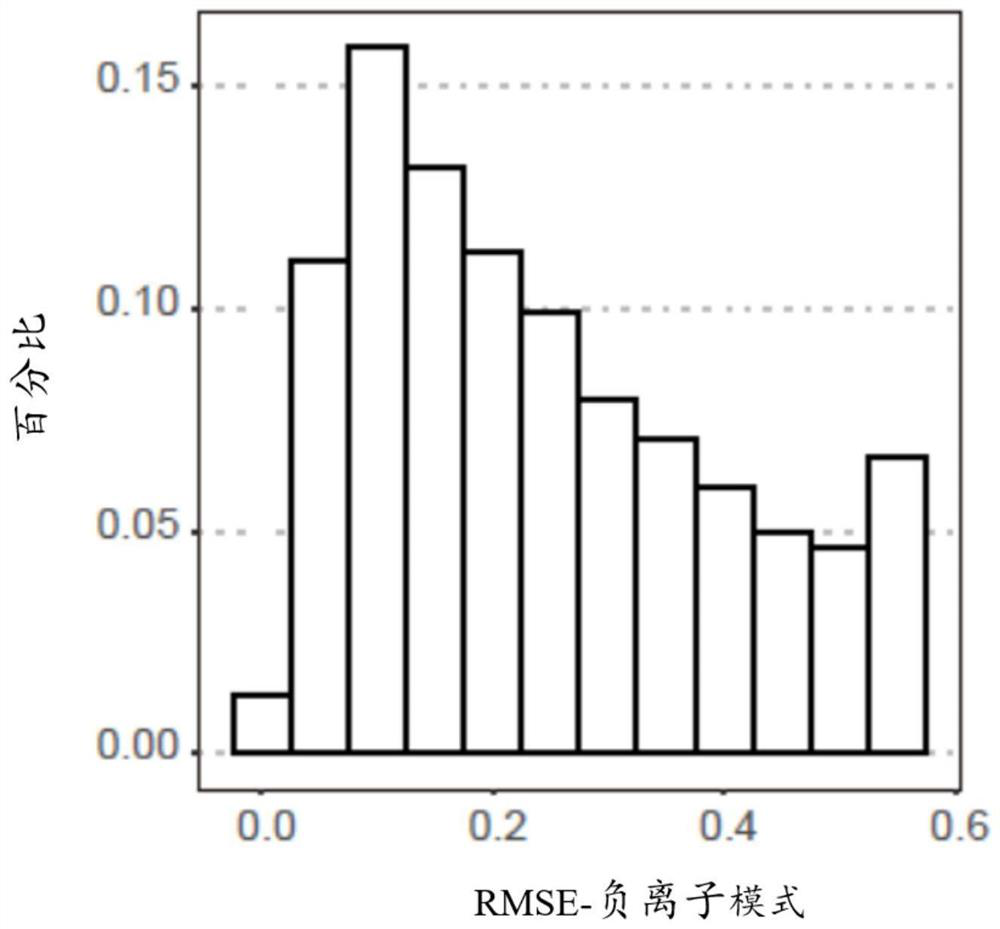Biomarker for detecting colorectal cancer or adenoma and method thereof
A technology for colorectal cancer and rectal adenoma, applied in the field of colorectal anomaly detection, can solve problems such as low accuracy
- Summary
- Abstract
- Description
- Claims
- Application Information
AI Technical Summary
Problems solved by technology
Method used
Image
Examples
Embodiment 1
[0170] Example 1 Semi-quantitative non-targeted metabolomic analysis in serum from discovery cohort reveals markedly altered metabolites in CRC and adenoma patients
[0171] Associations between serum metabolomes and colorectal adenomas or colorectal cancers were determined by untargeted metabolome profiling of the discovery group by LCMS. Figure 1A is a schematic diagram of an overview of the experimental design and analysis procedures shown in accordance with some embodiments of the present application. like Figure 1A As shown, the discovery group was divided into normal group, adenoma group, and colorectal cancer group. Low abundance signals (eg, mean abundance Figure 1B is an analytical graph of the distribution of R2 values for non-targeted LC-MS features in negative and positive ion mode. The R2 values of the linear regression model between the expected and measured mixing ratios for each metabolite detected in negative and positive ion modes are shown in Figu...
Embodiment 2
[0175] Example 2 Determination of significantly altered gut microbiome-related serum metabolites in patients with colorectal abnormalities
[0176] Figure 2A is an analysis map of the program for the integrated analysis of the fecal metagenome and serum metabolome in the matched set. In total, data from 44 subjects (11 normal and 33 colorectal abnormalities) passed quality control. Taxonomic analysis of metagenomic data revealed 12,455 microbiome species. Figure 2B is a bar graph of the 15 OUTs in each individual at the species level. Among the top 15 most abundant species, an increase was observed in enterotoxigenic Bacteroides fragilis (ETBF), which is considered a key pathogen for CRC initiation. like Figure 2C is an analysis of the relative abundance of several CRC-associated gut microbiome species in matched cohorts of normal and colorectal abnormal patients. like Figure 2C showed that the abundance of several other CRC-promoting species, including Fusobacterium...
Embodiment 3
[0178] Example 3 Prediction of colorectal abnormalities in the discovery group based on a list of gut microbiome-associated serum metabolites
[0179] Based on these gut microbiome-related serum metabolites, a LASSO algorithm was performed to find key metabolite biomarkers of colorectal abnormalities. The LASSO algorithm with 10-fold cross-validation (CV) was used for feature selection from previously determined serum metabolomic data and gut microbiome metabolomic data. 322 metabolite profiles were significantly altered between normal and CRC or adenoma samples (adjusted p<5E-3) and significantly associated with gut microbiome (p<1E-3, FDR≤18%). Using panel voting, more than 75% of the 200 LASSO runs involved 32 metabolite signatures. Annotations of their chemical structures, including MS2 transitions (if identifiable) were established by MS / MS spectral matching as previously described. As mentioned above, Table 1 lists 8 metabolite signatures out of 32 metabolite signature...
PUM
 Login to View More
Login to View More Abstract
Description
Claims
Application Information
 Login to View More
Login to View More - R&D
- Intellectual Property
- Life Sciences
- Materials
- Tech Scout
- Unparalleled Data Quality
- Higher Quality Content
- 60% Fewer Hallucinations
Browse by: Latest US Patents, China's latest patents, Technical Efficacy Thesaurus, Application Domain, Technology Topic, Popular Technical Reports.
© 2025 PatSnap. All rights reserved.Legal|Privacy policy|Modern Slavery Act Transparency Statement|Sitemap|About US| Contact US: help@patsnap.com



